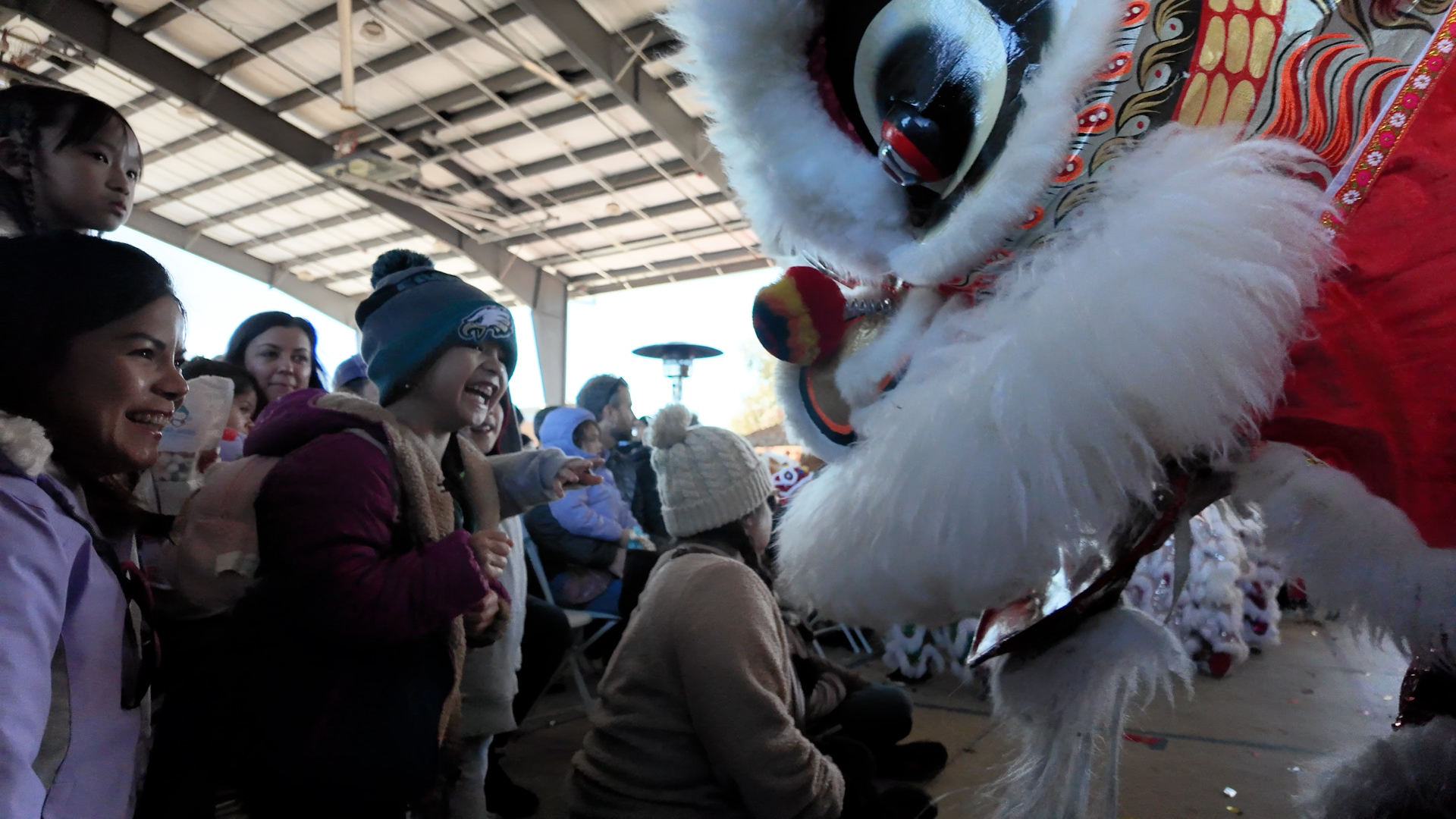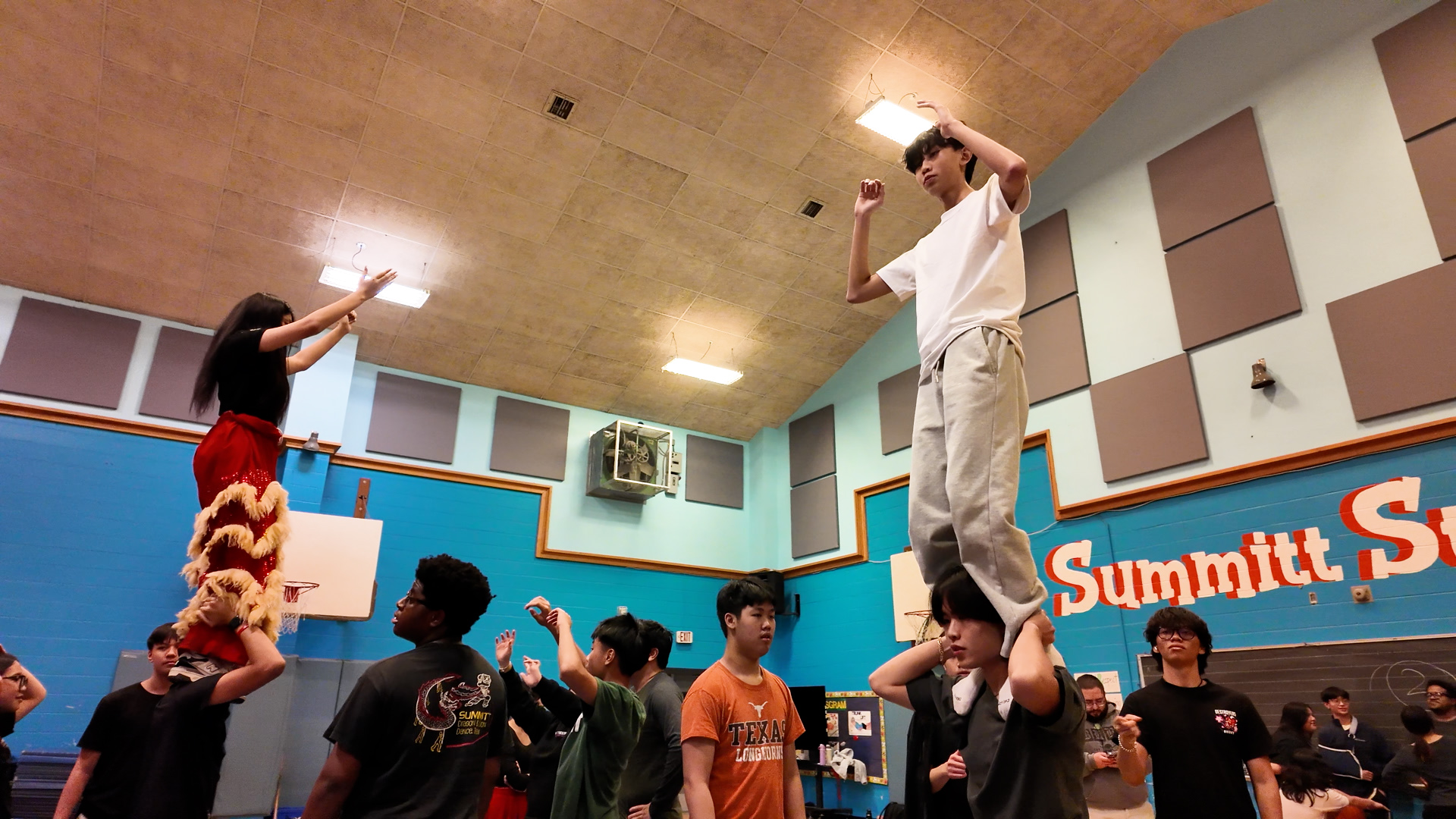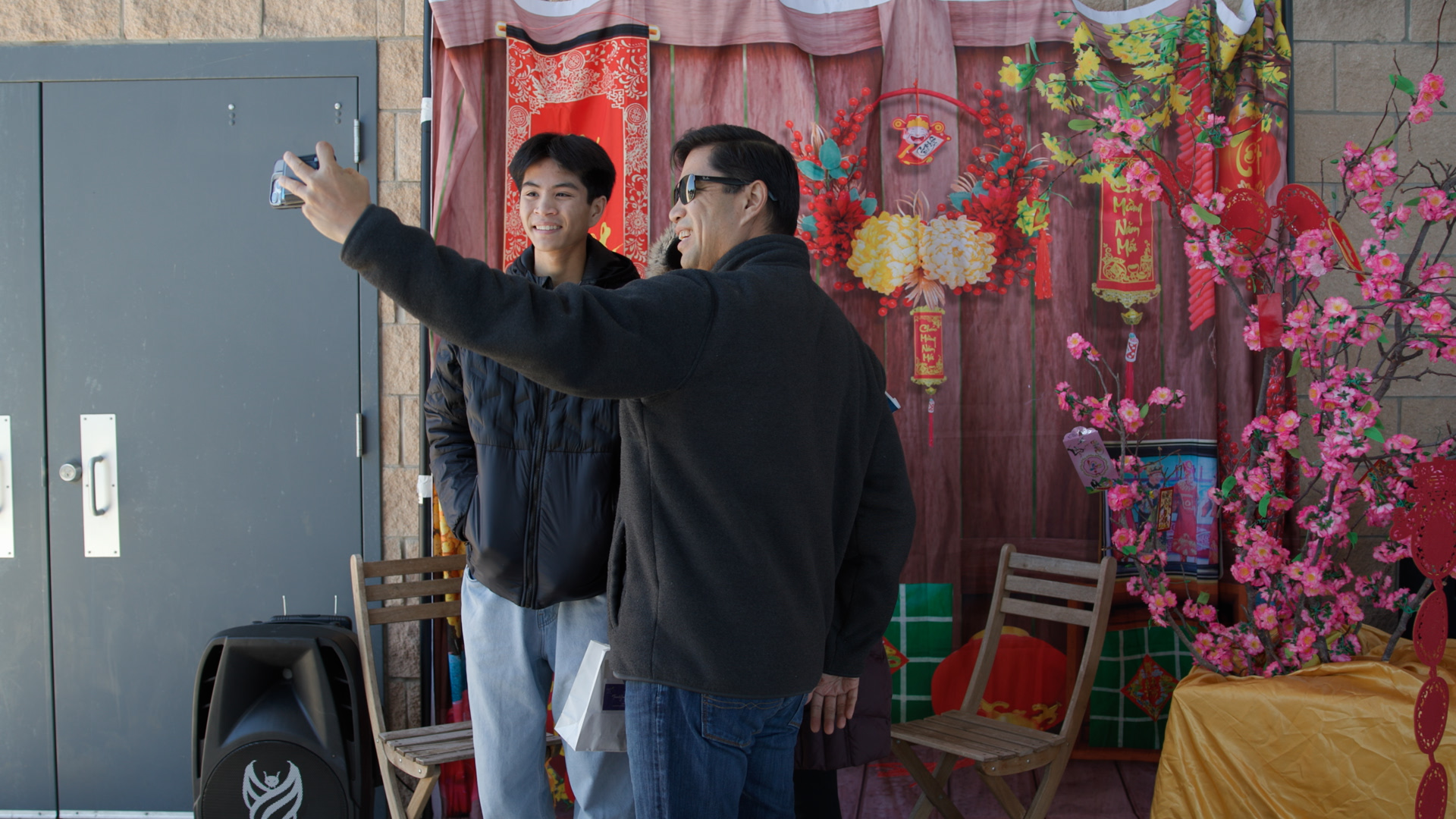Dancers bring cultural heritage to life in Rundberg
Amidst the rhythmic beats of drums and the resonant clang of a gong, the Summit Lion Dragon Dance performers spring to life. Dressed in vibrant lion costumes accentuated with golden designs and color schemes of pink, red, and green, the lion dancers captivate the audience with their energetic movements and seamless coordination. Each step and jump syncs perfectly with the lively music, creating a mesmerizing display of cultural tradition. “With the announcement of the lion dance, you just hear ‘aaah!’ says Thầy Thuận, an instructor with the Summit Lion & Dragon Dance Team.
“There’s cheers and excitement. … I've been doing this for 20 years and never gets old.” Unlike holidays that fall on a consistent day each year, Lunar New Year (also known as Spring Festival or Chinese New Year) varies between Jan. 21 and Feb. 20. This holiday typically begins on the second new moon after the winter solstice. The celebration starts with the new moon and concludes 15 days later with the Lantern Festival, which coincides with the full moon. In 2025, it is the Year of the Snake, the sixth animal in the 12-year cycle.
“It is one of the biggest holidays of the year. It's like Christmas,” Thuận says.
A child laughs as lion dancers lean in close during a performance.
Celebrated during Lunar New Year is the lion dance, a traditional performance meant to attract good fortune and dispel evil spirits. This elaborate spectacle dates back over a thousand years and was initially performed to deter a mythical beast called Nian, a monstrous being dwelling deep within the sea. To protect themselves, they hung red decorations and lit loud firecrackers to frighten Nian.
Typically, the dance involves two performers: one manages the head and front limbs, while the other controls the back and hind legs. It is accompanied by the rhythmic sounds of pounding drums, cymbals, and gongs. Their beats are crucial for signaling the lion’s next moves and ensuring synchronicity within the team.
“We have a main person who does the beats,” says Summit lion dancer Aeden Agha. “Then we have other percussionists who play cymbals and the gong.”
The ‘heads’ are typically lighter and take the front position. They perform acrobatic maneuvers, holding the lion's head high and jumping as needed. The ‘base’ acts as the foundation, providing stability and support for the head performer. This position requires immense strength and balance. ‘Bases’ routinely hold the ‘heads’ on their shoulders during the show.
"It's pretty difficult,” Agha says. “It's all strength. Your goal is to be stable enough, like a pillar, to support the head at any given time so they don't fall.”
The Summit Lion Dance Team practice balancing on teammate's shoulders.
In the heart of the action are dedicated individuals who bring this ancient art to life. Agha, a base in the lion dance team, anchors the routine with his strength and stability.
“It’s consistently a fun experience,” Agha says.
Aiden’s journey into lion dancing began in his early school years. In second grade, he joined a Vietnamese program at his school, which included a mix of Vietnamese and American students. After witnessing the program in first grade, he was inspired to try something new. He recalls attending performances where lion dancers captivated audiences, igniting his interest in the art form.
“The discipline and then even at a performance, the expectations, I feel like all that kind of just makes it a really fun experience, a really good experience,” Agha says.
Tristan Lu said his connection to the lion dance tradition began early in his childhood, with annual Lunar New Year celebrations keeping the spirit of lion dancing alive in his memories. In his freshman year of high school, Tristan's sister encouraged him to join the lion dance team. Despite initial hesitations, he quickly discovered a sense of joy and belonging within the team. Over the past two years, Tristan's passion for the lion dance and the strong sense of community it fostered have become an essential and cherished aspect of his cultural heritage and personal journey.
“At first I was hesitant,” Lu says. “But then the first week there, it was great and then I just continued to go ever since.”
The significance of lion dancing extends beyond individual growth; it serves as a cultural celebration that brings joy, luck, and positivity to audiences while also warding off bad karma. The program's impact is further amplified by the large Vietnamese, Asian, and Asian-American community in Rundberg, where such traditions help maintain cultural identity and foster unity among residents.
A family takes a group photo during the VACAT Lunar New Year celebration.
“The Asian American community in Austin used to be small,” Thuận says. “now there's folks in Pflugerville and Round Rock…the population started to migrate. [But] the lunar year is more of gathering together, catching up with old friends, and especially getting together with family.”
Thuận says the new year often symbolizes a fresh start, a time to usher in optimism while surrounded by family, friends and food. For many, the symbol of that joy and hope is wrapped in sequins, keeping beat to a taiko drum.
“Lion dancers perform to spread joy and happiness. That's what we try to portray in all these performances,” Lu says. “Just bring out positivity.”
Community journalism doesn’t happen without community support.
Got story ideas, advice on how we can improve our reporting or just want to know more about what we do? Reach out to us at news@klru.org.
And if you value this type of reporting, then please consider making a donation to Austin PBS. Your gift makes the quality journalism done by the Decibel team possible. Thank you for your contribution.
More in Arts & Music :
See all Arts & Music posts








Contact Us
Email us at news@klru.org